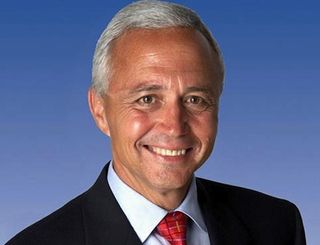Meredith and Media General Execs Tout Digital Upside of Merger

Top executives at Meredith and Media General told analysts during a conference call that the $2.4 billion merger they announced this morning has considerable upside in digital media as well as TV stations poised to benefit from 2016 election spending.
"On the revenue side, especially in the digital space, I believe we have upside opportunity when you look at putting the major brands Meredith has into the very big digital distribution system that Media General has built," said Meredith CEO Steve Lacy, who will become the combined company's CEO.
The combined entity will reach some 30% of U.S. TV households, via 88 stations in 54 markets, which would make it the No. 3 U.S. station group. In 80% of all markets where it operates, it will be No. 1 or No. 2 in terms of revenue, a point the executives returned to repeatedly during the hour-long call.
Reach among female audiences is seen as a key to the deal. About 100 million unduplicated women will be reached by the broadcast, digital and print assets of the combined company, and roughly 60% of all female millennials, via brands such as Better Homes and Gardens, Shape and AllRecipe.com. Meredith has already been seeking to wave its flag for digital advertisers, putting on a presentation for buyers at last spring’s NewFronts.
On the TV side, spending on the 2016 presidential campaign is expected to hit historic levels for all stations. The Meredith-Media General deal, if it clears regulatory hurdles, is expected to close in the second quarter of 2016.
Hillary Clinton “is already running advertising here in Iowa when I'm on my treadmill in the morning,” Lacy said, alluding to the Des Moines corporate headquarters of Meredith. Unlike during past elections, when Meredith missed out on certain geo-targeted ad buys, he added, “With that long list of battleground states, we're going to have the opportunity to be in the right place at the right time.”
Vince Sadusky, CEO of Media General, said the company had taken in $200 million from the last presidential cycle in 2012.
Broadcasting & Cable Newsletter
The smarter way to stay on top of broadcasting and cable industry. Sign up below
Asked about downward pressure on media stocks this summer, which was creating anxiety about traditional media even as the deal was being finalized, Lacy said, “The market could have been more helpful as we worked on this over the last month.... We can't control what goes on with the market but we feel very confident when it comes to scale and cash flow opportunity.”
In addition to election spending, another shot in the arm for stations—or at least certain stakeholders in the sector—figures to be the spectrum auction. The combined company will not depart from the individual companies’ current strategy when it comes to spectrum, executives said.
“There has been a tremendous amount of change in the media business,” Sadusky said. “Given the changes and the trends, it’s been the view at Media General to have scale and have marketing solutions. At the end of the day, there is a terrific amount of marketing dollars. It’s critical for brands to get their messages across.”
Lacy added that local TV, despite all of the headwinds it has faced, has fared considerably better than other forms of local media in recent years. “Local television is able to drive people to a car dealer on a Saturday morning,” for example, he said. “I see that as the opportunity going forward.”
Asked about any further consolidation down the road, in a market that has seen several billion-dollar roll-ups over the past two years, Lacy said nothing was imminent. “As I like to remind my board, this is not like shopping at retail,” he said. “We have to look carefully at the numbers.”
